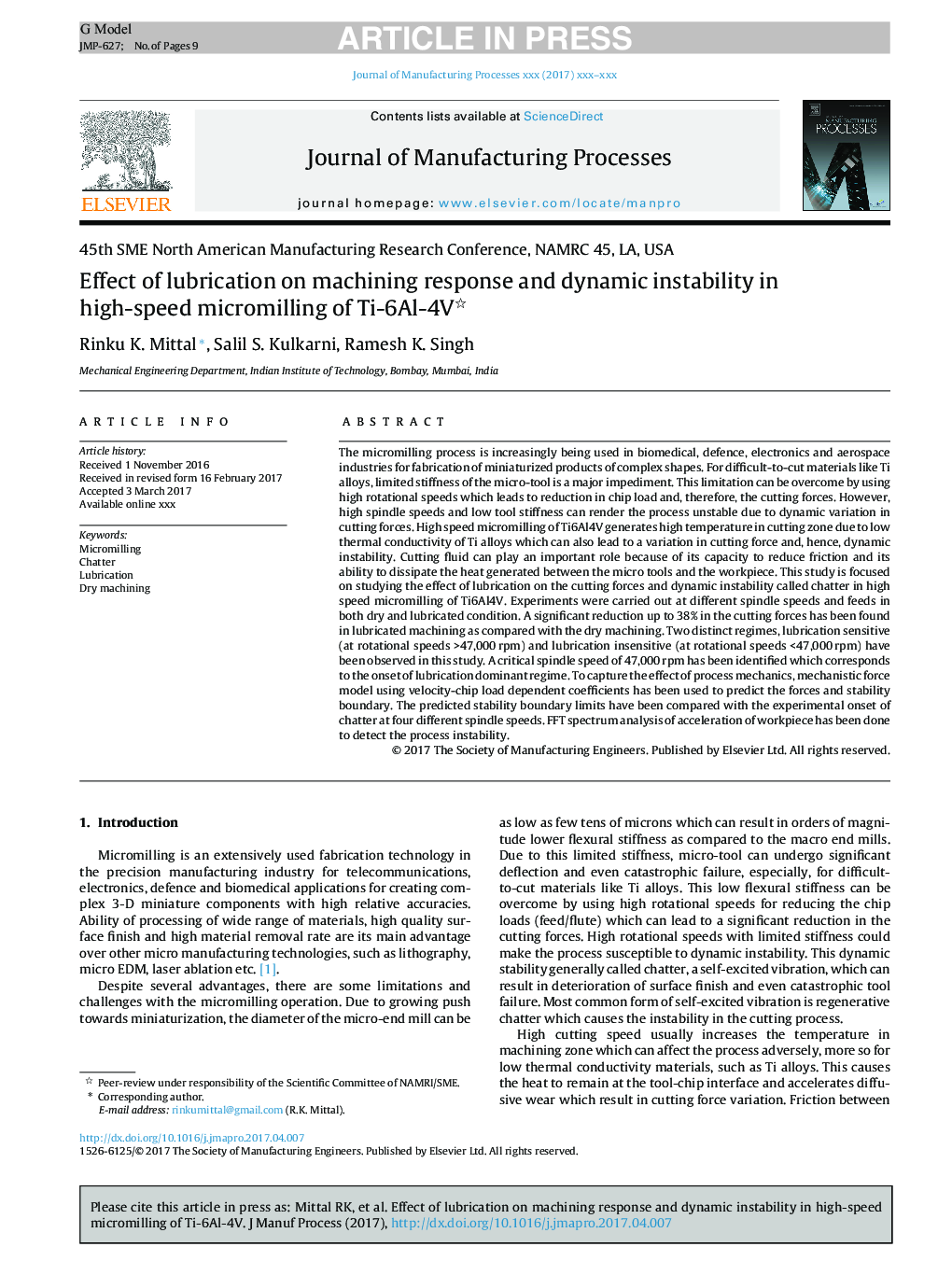| Article ID | Journal | Published Year | Pages | File Type |
|---|---|---|---|---|
| 5469245 | Journal of Manufacturing Processes | 2017 | 9 Pages |
Abstract
The micromilling process is increasingly being used in biomedical, defence, electronics and aerospace industries for fabrication of miniaturized products of complex shapes. For difficult-to-cut materials like Ti alloys, limited stiffness of the micro-tool is a major impediment. This limitation can be overcome by using high rotational speeds which leads to reduction in chip load and, therefore, the cutting forces. However, high spindle speeds and low tool stiffness can render the process unstable due to dynamic variation in cutting forces. High speed micromilling of Ti6Al4V generates high temperature in cutting zone due to low thermal conductivity of Ti alloys which can also lead to a variation in cutting force and, hence, dynamic instability. Cutting fluid can play an important role because of its capacity to reduce friction and its ability to dissipate the heat generated between the micro tools and the workpiece. This study is focused on studying the effect of lubrication on the cutting forces and dynamic instability called chatter in high speed micromilling of Ti6Al4V. Experiments were carried out at different spindle speeds and feeds in both dry and lubricated condition. A significant reduction up to 38% in the cutting forces has been found in lubricated machining as compared with the dry machining. Two distinct regimes, lubrication sensitive (at rotational speeds >47,000Â rpm) and lubrication insensitive (at rotational speeds <47,000Â rpm) have been observed in this study. A critical spindle speed of 47,000Â rpm has been identified which corresponds to the onset of lubrication dominant regime. To capture the effect of process mechanics, mechanistic force model using velocity-chip load dependent coefficients has been used to predict the forces and stability boundary. The predicted stability boundary limits have been compared with the experimental onset of chatter at four different spindle speeds. FFT spectrum analysis of acceleration of workpiece has been done to detect the process instability.
Related Topics
Physical Sciences and Engineering
Engineering
Industrial and Manufacturing Engineering
Authors
Rinku K. Mittal, Salil S. Kulkarni, Ramesh K. Singh,
